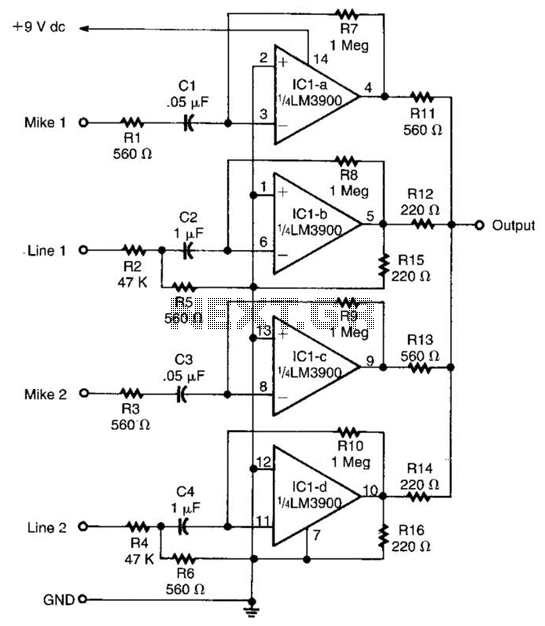
Intelligent interface circuit and temperature sensor DS1620 SPI bus circuit

This circuit features a three-wire serial interface for smart temperature sensors, specifically the DS1620, along with an SPI bus interface circuit.
The DS1620 is a high-accuracy digital temperature sensor that communicates over a three-wire interface, which consists of a data line (DQ), a clock line (CLK), and a chip select line (CS). This configuration allows for straightforward integration into various microcontroller systems. The sensor operates within a temperature range of -55°C to +125°C with a resolution of 0.5°C, making it suitable for a wide array of applications, including environmental monitoring and industrial automation.
In this circuit, the DS1620 connects to a microcontroller via the three-wire interface. The microcontroller is responsible for sending commands to the DS1620 to initiate temperature readings and receive temperature data. The SPI bus interface can be utilized to expand the circuit's capabilities, allowing multiple devices to communicate over the same bus, thus enhancing the system's scalability.
The circuit design should ensure proper pull-up resistors on the data line to maintain signal integrity. Additionally, decoupling capacitors should be placed near the power supply pins of the DS1620 to filter out noise and ensure stable operation. The layout of the circuit board should consider minimizing the length of the connections to reduce potential interference and maintain signal quality.
In summary, the integration of the DS1620 with an SPI bus interface creates a robust and flexible temperature sensing solution that can be adapted for various applications, providing accurate temperature readings and efficient communication between components.With a three-wire serial interface smart temperature sensors DS1620 and SPI bus interface circuit as shown below:
The DS1620 is a high-accuracy digital temperature sensor that communicates over a three-wire interface, which consists of a data line (DQ), a clock line (CLK), and a chip select line (CS). This configuration allows for straightforward integration into various microcontroller systems. The sensor operates within a temperature range of -55°C to +125°C with a resolution of 0.5°C, making it suitable for a wide array of applications, including environmental monitoring and industrial automation.
In this circuit, the DS1620 connects to a microcontroller via the three-wire interface. The microcontroller is responsible for sending commands to the DS1620 to initiate temperature readings and receive temperature data. The SPI bus interface can be utilized to expand the circuit's capabilities, allowing multiple devices to communicate over the same bus, thus enhancing the system's scalability.
The circuit design should ensure proper pull-up resistors on the data line to maintain signal integrity. Additionally, decoupling capacitors should be placed near the power supply pins of the DS1620 to filter out noise and ensure stable operation. The layout of the circuit board should consider minimizing the length of the connections to reduce potential interference and maintain signal quality.
In summary, the integration of the DS1620 with an SPI bus interface creates a robust and flexible temperature sensing solution that can be adapted for various applications, providing accurate temperature readings and efficient communication between components.With a three-wire serial interface smart temperature sensors DS1620 and SPI bus interface circuit as shown below:





